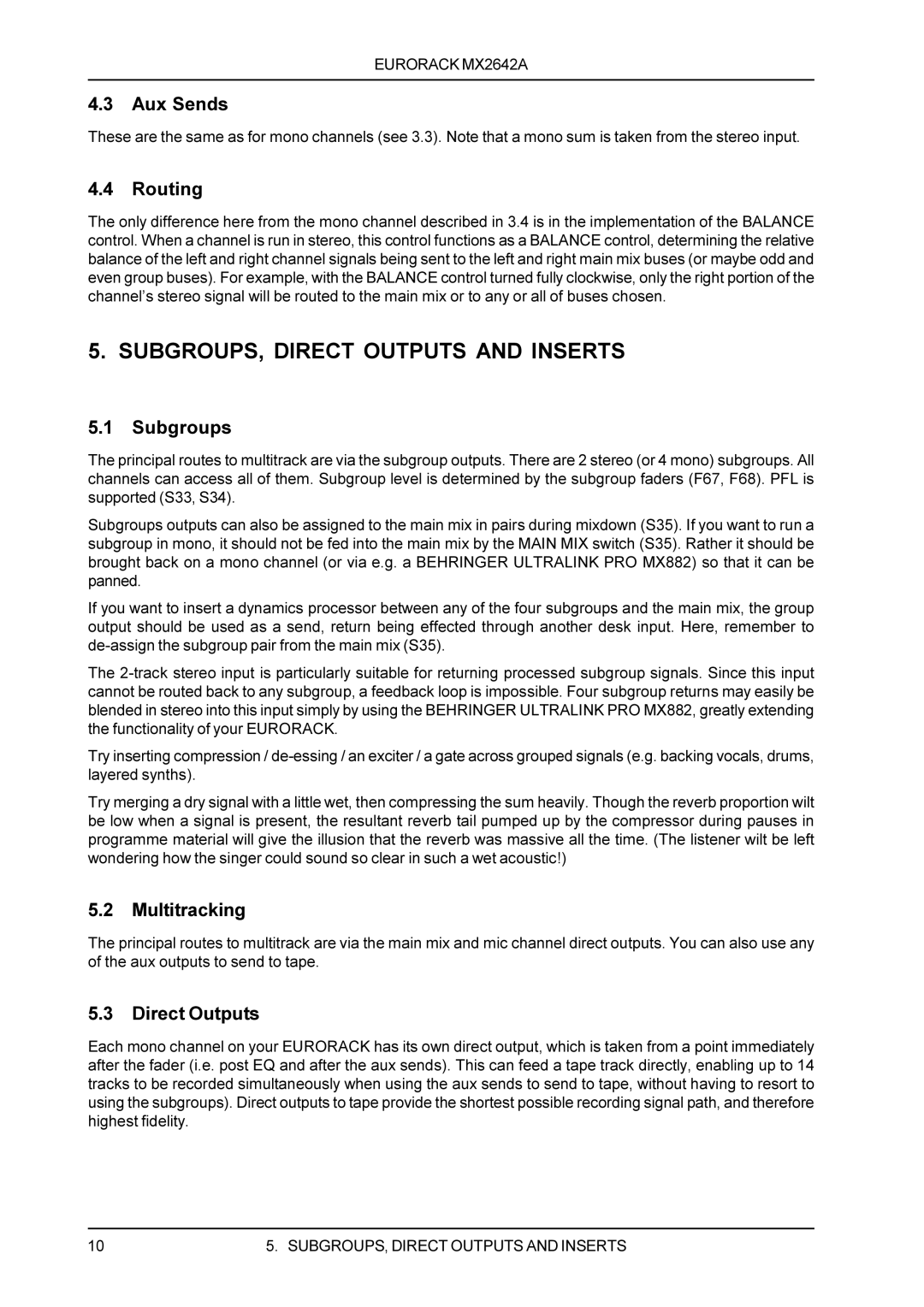
EURORACK MX2642A
4.3 Aux Sends
These are the same as for mono channels (see 3.3). Note that a mono sum is taken from the stereo input.
4.4 Routing
The only difference here from the mono channel described in 3.4 is in the implementation of the BALANCE control. When a channel is run in stereo, this control functions as a BALANCE control, determining the relative balance of the left and right channel signals being sent to the left and right main mix buses (or maybe odd and even group buses). For example, with the BALANCE control turned fully clockwise, only the right portion of the channel’s stereo signal will be routed to the main mix or to any or all of buses chosen.
5. SUBGROUPS, DIRECT OUTPUTS AND INSERTS
5.1 Subgroups
The principal routes to multitrack are via the subgroup outputs. There are 2 stereo (or 4 mono) subgroups. All channels can access all of them. Subgroup level is determined by the subgroup faders (F67, F68). PFL is supported (S33, S34).
Subgroups outputs can also be assigned to the main mix in pairs during mixdown (S35). If you want to run a subgroup in mono, it should not be fed into the main mix by the MAIN MIX switch (S35). Rather it should be brought back on a mono channel (or via e.g. a BEHRINGER ULTRALINK PRO MX882) so that it can be panned.
If you want to insert a dynamics processor between any of the four subgroups and the main mix, the group output should be used as a send, return being effected through another desk input. Here, remember to
The
Try inserting compression /
Try merging a dry signal with a little wet, then compressing the sum heavily. Though the reverb proportion wilt be low when a signal is present, the resultant reverb tail pumped up by the compressor during pauses in programme material will give the illusion that the reverb was massive all the time. (The listener wilt be left wondering how the singer could sound so clear in such a wet acoustic!)
5.2 Multitracking
The principal routes to multitrack are via the main mix and mic channel direct outputs. You can also use any of the aux outputs to send to tape.
5.3 Direct Outputs
Each mono channel on your EURORACK has its own direct output, which is taken from a point immediately after the fader (i.e. post EQ and after the aux sends). This can feed a tape track directly, enabling up to 14 tracks to be recorded simultaneously when using the aux sends to send to tape, without having to resort to using the subgroups). Direct outputs to tape provide the shortest possible recording signal path, and therefore highest fidelity.
10 | 5. SUBGROUPS, DIRECT OUTPUTS AND INSERTS |
